⭐️⭐️.5
Developer (Platform): Ninja Theory (Xbox Series X)
Publisher (Release): Xbox Game Studios (2024)
Length: 5-7 hours
Genres: Adult; Fantasy; Narrative; Action; Adventure
❗️Disclaimers❗️:
contains strong depictions of violence and gore
severe trigger warnings for in-depth mental health depictions
this review contains low-level spoilers
recommendation: vibe check before playing
👍 Pros 👍
Spectacularly stunning visuals and animations
Peerless sound design
Senua’s journey is tragic and hopeful
👎 Cons 👎
Wrestles too much control away from the player
Strips back already simple mechanics
Short but padded
👀 Synopsis & Trailer 👀
Senua returns in a brutal journey of survival through myth and torment of Viking Iceland. Intent on saving those who have fallen victim to the horrors of tyranny, Senua faces a battle of overcoming the darkness within and without.
🛎️ Introduction 🛎️
Arriving with surprisingly little aplomb, Hellblade 2: Senua’s Saga is a stunning spectacle that is arguably the best-looking release on Xbox so far, but, outside of delivering vistas near indistinguishable from reality, Senua’s Saga wrestles the player for control, prioritising the developer’s ideal experience over the player’s.
I got distinct The Medium meets The Callisto Protocol vibes as a lust for narrative joins an undercooked combat system that’s tacked on, and it hurts. ‘Cinematic’ black bars mar the aspect ratio while a wonderfully smooth implementation of 30 frames-per-second can’t distract from yet another design choice that asks the question: how much control is reasonable to take from the player to justify a game’s narrative?
🧩 Plots 🧩
With the first entry’s trials teaching the powerful but vulnerable Senua what she needed to promise to live, Saga sees her searching to give that promise meaning. The developers dedication to detail surrounding mental health, specifically psychosis, shines as a story full of signs and metaphors beg the player to decipher them. Bloody and brutal, Hellblade 2 confronts us with the heartbreaking reality that not every problem has a solution and not every solution comes absent its own host of problems.
Wisdom comes with a price: uncertainty.
The evil within vs the evil without
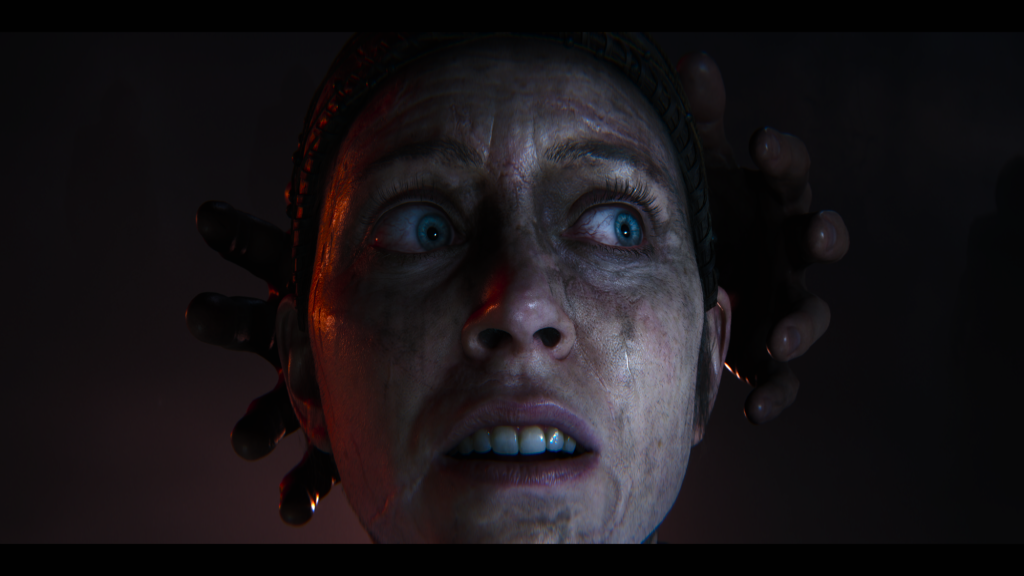
Intricate lore and legend inspire a haunting magic that accompanies Senua’s travels through Viking lands, and, with the introduction of real humans, the series’s question of reality is provided a fairly subtle answer: Senua isn’t just insane. No one can see in the way she does, but the world itself is weirder and wackier than the previous entry’s misdirecting metaphors, opening it up in a satisfying but not blatant way for the player.
As the game opens up, its veneer begins to crack. I laude the attention, passion, and care invested into depicting accurate mental health issues, but their very nature very quickly begins to work against the narrative Ninja Theory try to craft. Regression is a heartbreaking reality for those whose mind works against them and, while depicted here, the narrative’s push for a more hopeful and empowering journey clashes quite harshly with it, casting a gratuitous light on Senua’s pain that is clearly unintended but sadly unmissable.
How do you fight your own mind?
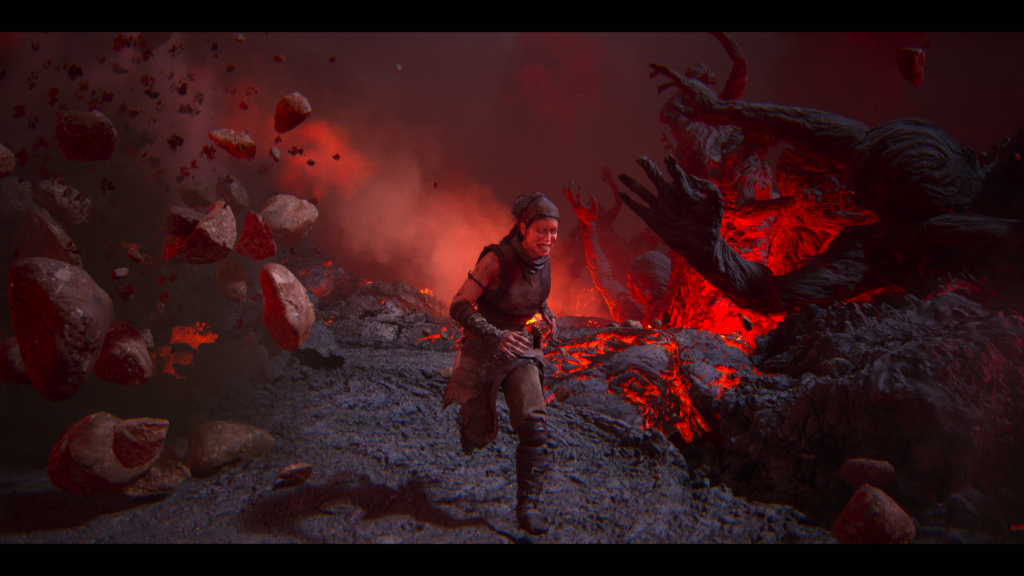
Senua’s physical journey also feels fragmented, with the rich lands of the Vikings reduced to small, isolated areas with very little to do bar walk forwards. The larger part of the adventure happens offscreen and it left me wondering if the game’s scale fell victim to its visual ambitions. The latter can often display epic events that, while intense, can’t quite hide the lack of actual tension. Nothing happens that isn’t supposed to which, while that sounds like a duh, it’s scripted, idiot, highlights another layer of the experience, of the game, that takes the player’s utility away from them.
I kept trying to reconcile this with, well, it fits the focus on mental health, right? Psychological conditions will, without warning, rob us of our logic and reason, leaving us unable to control the flow of our lives in a way we want and know would be beneficial, but, where Senua’s Sacrifice managed to craft a balance between story and interaction, Senua’s Saga gives too much weight to the former.
‘Wisdom comes with a price: uncertainty.’
🎭 Characters 🎭
Where the wider world struggles with an identity crisis, Senua herself returns to anchor the player with a tragic and hopeful personal journey. Melina Jürgens brings the titular character to life with visceral emotion expertly conveyed by the developer’s awe-inspiring animation.
The trials she faces and the strength she displays make Senua a force of nature. Her humanity humbles her to the player, making it easy to root for and empathise with her.
I am the danger

Joining her is a small cast of other, very real humans. I say that like that because the first game focused exclusively on Senua, but, with her promise to live, we see the avenging angel have her convictions challenged when pesky compassion turns her raised sword away from her enemies to theirs.
It’s an honest and layered thread throughout that’s absolutely beautiful. Senua’s Saga is as much about the living as it is the shadows of the dead and accompanying Senua as she returns to life is inspiring and left me, not only with a lump in my throat and tears of pride in my eyes, but a thirst for more with this remarkably realised tour de force of a character.
No longer alone
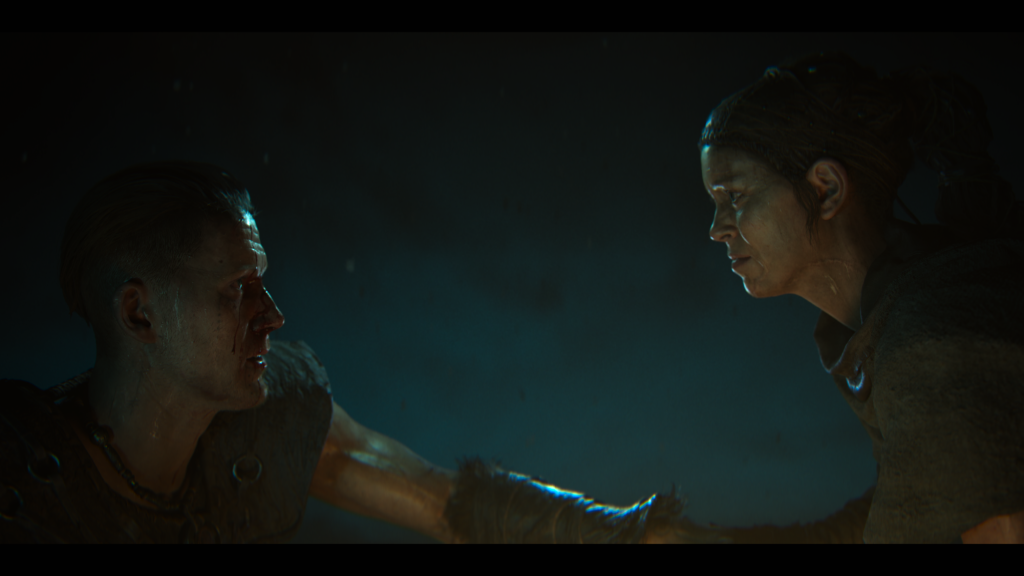
Supporting cast members do a wonderful job in carving their own characters into the story, from a Viking slaver in crisis to a Shaman-esque survivor who accepts Senua with no compromises. The development and weave work between characters are both impeccable, and, even when the story clashes with itself, the cast never fails to help smooth out the cracks.
‘The trials she faces and the strength she displays makes Senua a force of nature.’
👾 Gameplay and Graphics 👾
Like its predecessor, Senua’s Saga prioritises art over substance but, unlike its predecessor, regressions in almost every aspect of gameplay throw such a delicate balance off-kilter. Traversal is heavy, laborious, and slow, more about letting the vistas breathe and the characters talk than exploration. There are little pockets to find collectibles in (thanks, Ninja Theory, I see faces in every rock now), but there’s no real incentive or push to drive the player to look for them.
Combat also surprised me. Where the first game kept it simple, it was still realistic and reliable, and, although Saga carries forward the crunch and cinematography, it also strips it back. Fighting feels less responsive with even tighter timing that weights the player down in favour of failure. Why? Well, those cinematic animations won’t show themselves.
Not to mention the maddening amount of shimmying that I think beats out The Callisto Protocol for frustrating slowdown. If you’re not shimmying across a ledge, you’re shimmying through a crack; if you’re not crouched, you’re crawling; and if you’re not locked in a cutscene, your control is ripped away from you to showcase the visuals in an animation.
I don’t mind narrative focused games with simple, even non-existent gameplay, but there is nothing more dissatisfying than a game that offers something only to rip it from your hands.
Dig deep
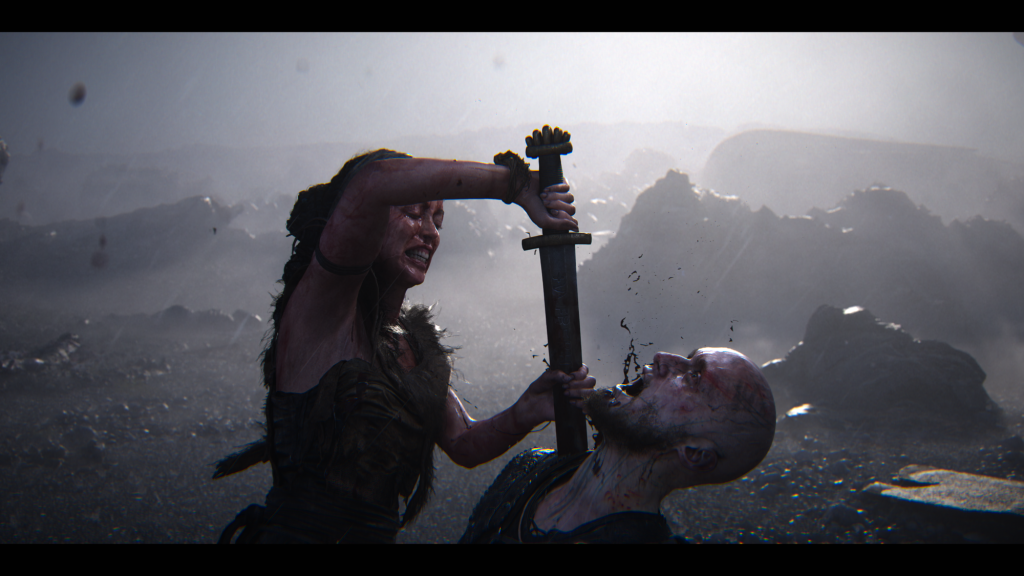
Speaking of hands, credit goes to those that crafted Saga’s masterful visuals and brought an ancient and mysterious time into vivid reality. The game might prioritise the sights quite a bit more than I’d like, but no one can deny how impressive those sights and animations are. Hellblade 2 is spectacularly stunning.
Supporting that is a powerful atmosphere enriched with some of the best audio design in gaming period. Ninja Theory’s skills with sound are worth protecting to the death and the way they can slither emotion under the skin with a simple note goes beyond reason and straight into magic.
Are you strong enough to look beyond the veil?
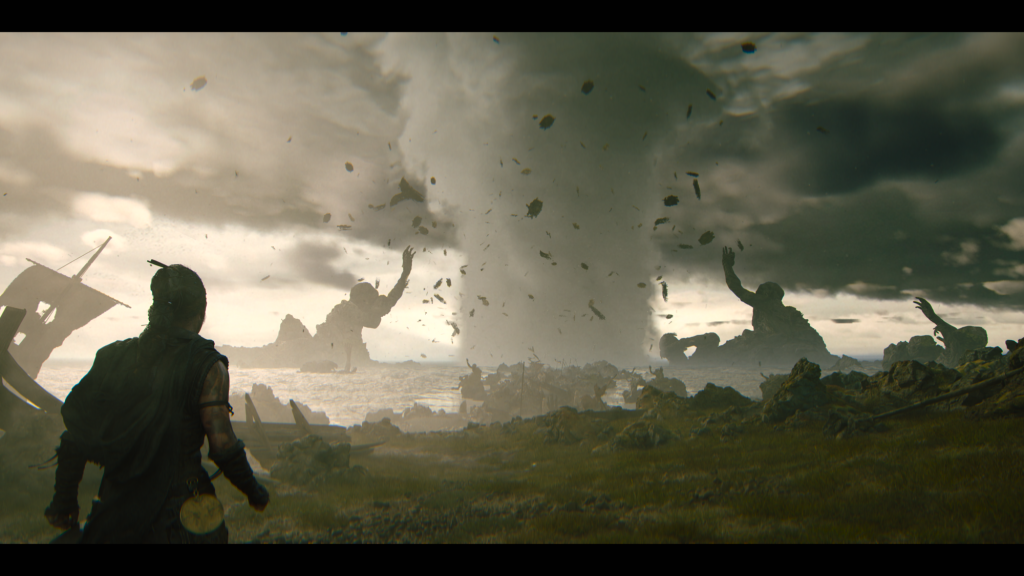
However, and sadly for me, Senua’s Saga just isn’t much fun to play. Repetitive mechanics and lacklustre puzzles aren’t enough to engage the player or have them return for another round. Even at 5-7 hours, the game, overall, feels bloated while still managing to convey a sense of being unfinished.
‘Ninja Theory’s skills with sound are worth protecting to the death…’
🧠 Final Thoughts 🧠
Hellblade 2: Senua’s Saga is an absolutely gorgeous jaunt that scintillates the senses and challenges the mind. Sound design and atmosphere are near peerless and a powerfully tragic protagonist anchors the experience in a bloody and brutal reality that begs to be explored…
…only to rob that opportunity from you.
Saga prioritises its art too much, stripping back its gameplay and player control while favouring failure to force its animations on you. Basic traversal is a slog, combat is crunchy but painful, and repetitive puzzles aren’t enough to break the short but padded playtime.
Saga fails to capture the intensely delicate balance of its predecessor and finds itself in a chaotic struggle with the player to play the game for them, wrestling and clawing control while forgetting that its visual and audio highs aren’t enough to balance the mechanical lows.


